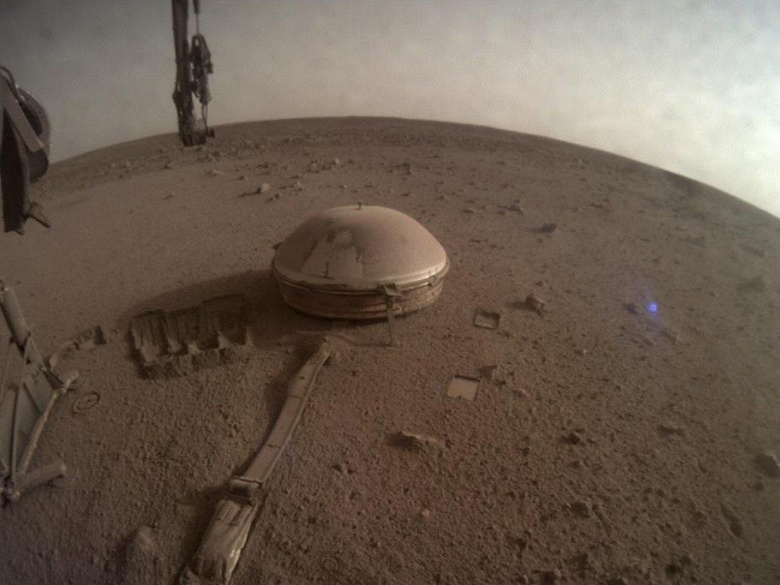Signals generated by the movement of seismic waves through water could become a new tool in the search for moisture on Mars
If liquid water exists on Mars today, it is likely too deep below the surface to be detected by traditional methods as on Earth. However, a group of scientists from the University of Pennsylvania proposes a new approach to searching for water on the Red Planet – «listening» Marsquakes.
When seismic waves from earthquakes pass through aquifers deep below the surface, they produce characteristic electromagnetic signals, according to the study. According to scientists, such signals, if they also occur during marsquakes, could be the key to detecting and localizing subsurface water reservoirs on Mars.
«The scientific community has theories that Mars once had oceans and that all the water disappeared over the course of its history. But there is evidence that some water remains in the interior of the planet. We just haven't been able to detect it. The idea is that if we can detect these electromagnetic signals, we can find water on Mars,», — says Nolan Roth, a doctoral student in the Department of Geosciences at Penn State and lead author of the study.
On Earth, ground penetrating radar is often used to map subsurface structures, but this technology is ineffective several miles below the surface of Mars, where water may be present. Instead, the researchers propose using a new approach to non-invasively studying the interiors of planets — seismoelectric method.
When seismic waves from marsquakes move through a subsurface aquifer, differences in the movement of rock and water create electromagnetic fields that can be detected by sensors on the surface.
«If we "listen" Marsquakes that pass through water will create unique electromagnetic field signals. These signals will be evidence of water on modern Mars», — says Roth.
Unlike on Earth, where background electrical noise makes interpreting seismoelectric signals difficult, such separation is not required on Mars, where the surface is dry. According to Tiyuan Zhu, assistant professor of geosciences at the University of Pennsylvania and Roth's co-author, “the surface of Mars naturally cancels out noise, leaving behind useful data to characterize the properties of the aquifer.”
Researchers from the University of Pennsylvania created a model of the Martian subsurface, including aquifers, to simulate the operation of the seismoelectric method. The analysis showed that this technique can be successfully applied to study in detail the characteristics of subsurface water reservoirs, including their thickness, physical and chemical properties such as salinity.
Future research in this direction could be based on data already collected on Mars. NASA's InSight lander, launched in 2018, carried a seismometer to Mars that tracked marsquakes. While the instrument on its own cannot distinguish between water, gas and rock, scientists believe that combining data from the mission's seismometer and magnetometer could reveal seismoelectric signals characteristic of subsurface water reservoirs.
Sending a special magnetometer designed for scientific experiments on future missions could yield more accurate and useful results, the researchers say. «This technique has potential not only for Mars, but also, for example, for measuring the thickness of icy oceans on Jupiter's moon»,— Tiyuan Zhu noted. Scientists urge the scientific community to pay attention to this promising geophysical approach, which could have broad prospects for the study of planets and their moons.

